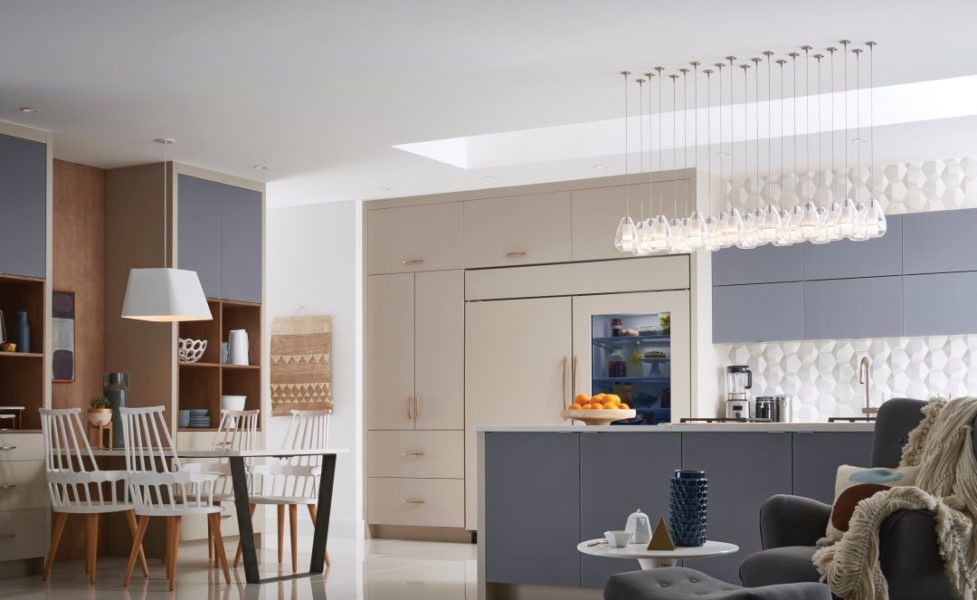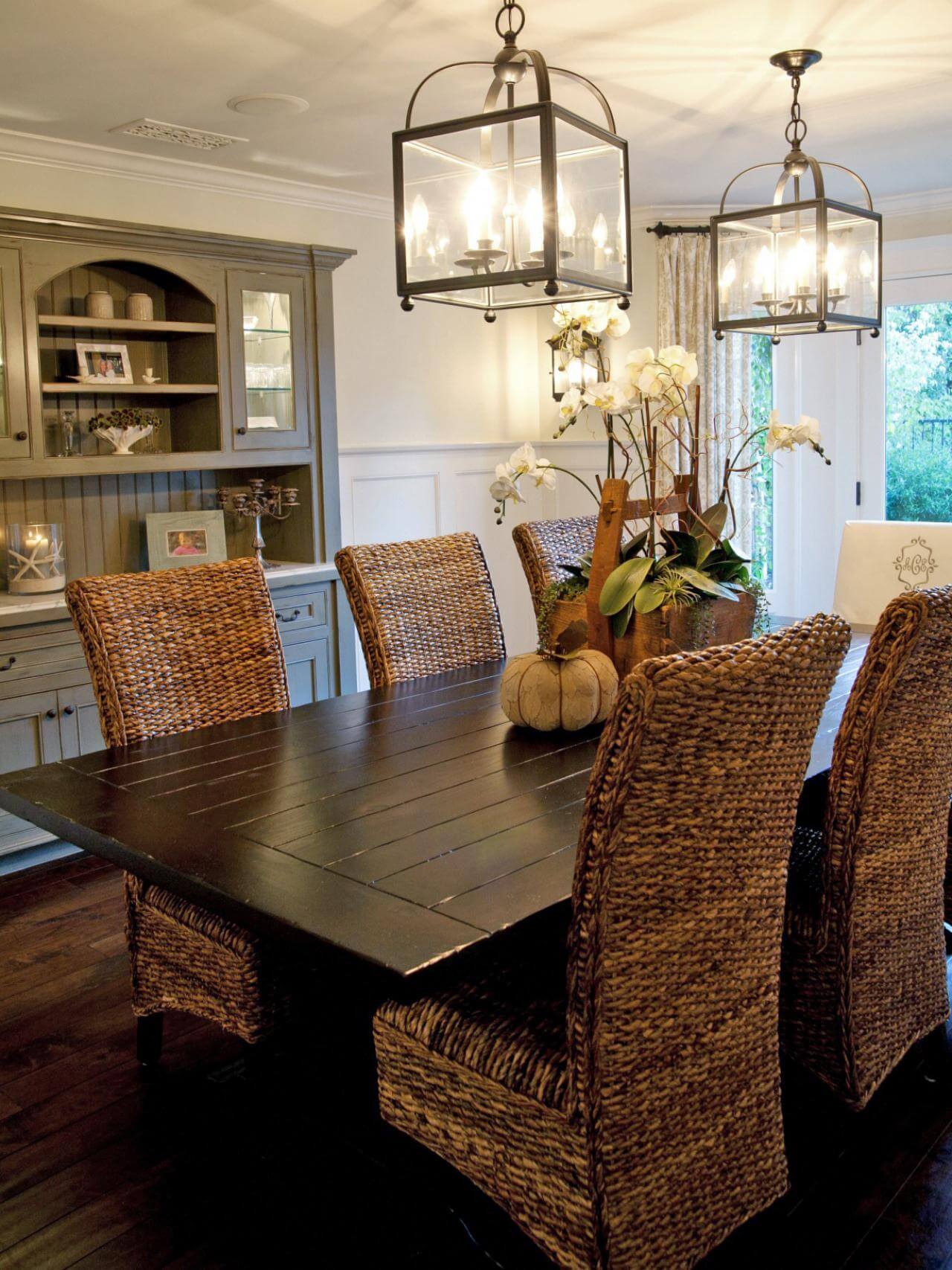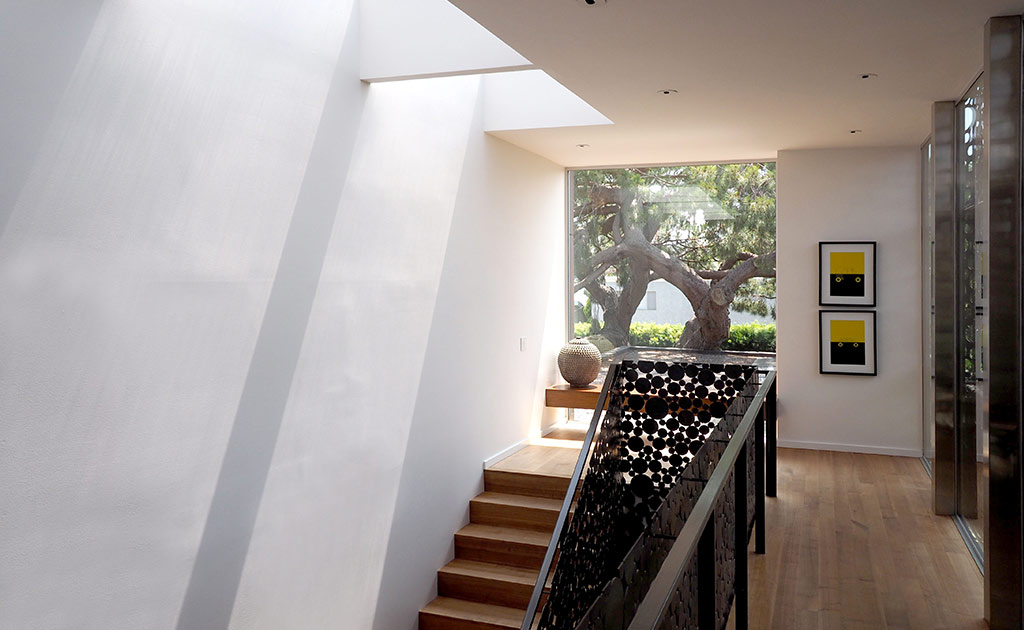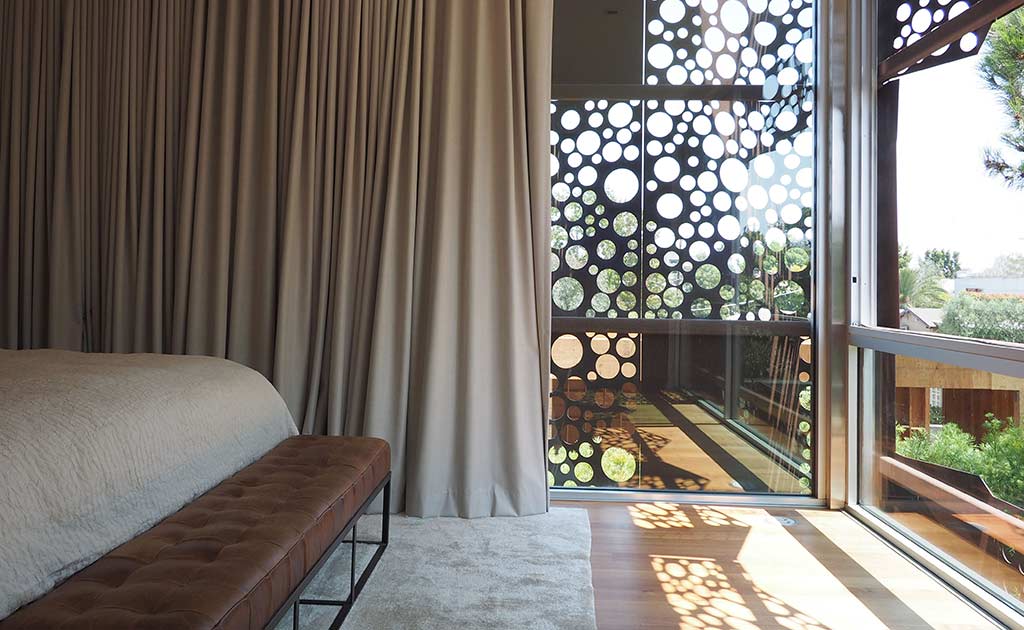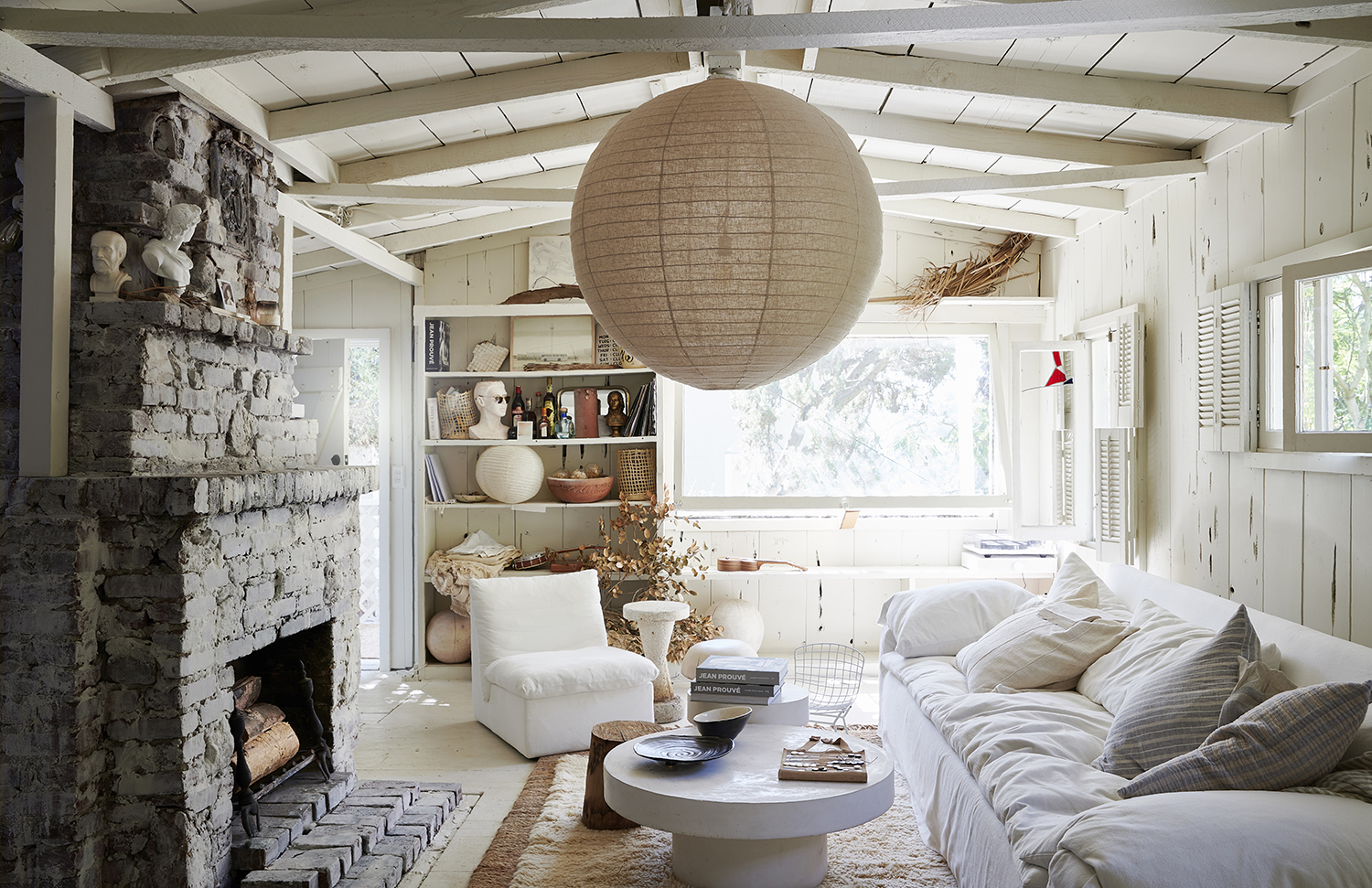When it comes to designing a dining room, lighting is often an overlooked element. However, the right lighting can completely transform the look and feel of your dining area. To help you create the perfect ambiance for your meals, we have compiled a list of the top 10 dining room lighting rules. Lighting Rules for Dining Rooms
First and foremost, it is important to understand the basic dos and don'ts of dining room lighting. Do consider the size of your dining table and the height of your ceiling when choosing a light fixture. Don't choose a fixture that is too large or too small for your space. Do opt for dimmable lights to create a versatile ambience. Don't rely on one source of light, mix and match different types of lighting for a layered and dynamic look. Dining Room Lighting Dos and Don'ts
The key to proper dining room lighting is to create a balance between ambient, task, and accent lighting. Ambient lighting provides overall illumination for the room, while task lighting is focused on specific areas for tasks such as reading or food preparation. Accent lighting adds visual interest and highlights certain elements in the room. A combination of these three types of lighting will ensure that your dining room is well-lit and functional. How to Properly Light a Dining Room
When it comes to dining room lighting, there are a few best practices that you should keep in mind. Firstly, consider the color temperature of your light bulbs. Warm white bulbs (2700K-3000K) are ideal for creating a cozy and inviting atmosphere, while cool white bulbs (3500K-4100K) work well for a more modern and crisp look. Additionally, make sure to position your light fixtures at the correct height. A chandelier or pendant light should hang 30-34 inches above the dining table, while wall sconces should be placed at eye level when seated at the table. Best Practices for Dining Room Lighting
When choosing light fixtures for your dining room, there are a few essential tips to keep in mind. First, make sure the size of your fixture is proportionate to the size of your table. A general rule of thumb is to choose a fixture that is around 12 inches smaller than the width of your table. Additionally, consider the style and design of your dining room. A modern chandelier may not work well in a traditional dining room, while a rustic pendant light may clash with a sleek and contemporary space. Essential Lighting Tips for Dining Rooms
The perfect dining room lighting is all about finding the right balance and creating a cohesive look. Don't be afraid to mix and match different types of lighting, such as a chandelier and wall sconces, to add depth and dimension to your space. Additionally, consider incorporating natural light into your dining room design by using sheer curtains or opting for a table near a window. Natural light not only adds brightness to the room, but it also has a positive effect on mood and energy levels. Creating the Perfect Dining Room Lighting
When it comes to dining room lighting, there are a few common mistakes that people often make. One of the most common mistakes is choosing a light fixture that is too small for the space. This can make the room feel unbalanced and the lighting inadequate. Another mistake is not considering the purpose of the room. If your dining room is also used as a workspace, make sure to incorporate task lighting in addition to ambient lighting for a functional and well-lit space. Common Mistakes in Dining Room Lighting
Choosing the right dining room lighting can be overwhelming with so many options available. Start by considering the style and design of your dining room. Is it traditional, modern, or eclectic? This will help guide your decision when it comes to choosing the right light fixture. Additionally, think about the purpose of your dining room. If it is primarily used for formal dinners, a statement chandelier may be the perfect choice. If it is a multi-functional space, opt for more versatile lighting options. How to Choose the Right Dining Room Lighting
Natural light is a valuable asset in any room, and the dining room is no exception. To maximize the natural light in your dining room, make sure to keep windows clean and free of obstructions. Additionally, use light-colored or sheer curtains to allow as much natural light in as possible. If privacy is a concern, consider using blinds or shades that can be easily adjusted to control the amount of light that enters the room. Maximizing Natural Light in Your Dining Room
If you're stuck on how to light your dining room, there are plenty of ideas and inspiration to be found. Browse home decor magazines, Pinterest, or visit furniture and lighting stores to gather ideas. You can also consider consulting with a professional interior designer for expert advice and guidance. Remember to keep in mind the size, style, and purpose of your dining room when choosing the perfect lighting for your space. In conclusion, lighting is an essential element in creating the perfect dining room. By following these top 10 dining room lighting rules, you can create a space that is functional, visually appealing, and sets the right ambiance for your meals. Remember to consider the size, style, and purpose of your dining room, and don't be afraid to mix and match different types of lighting to create a dynamic and well-lit space. Dining Room Lighting Ideas and Inspiration
The Importance of Proper Dining Room Lighting

Lighting is More Than Just Illumination
 When designing a house, lighting is often overlooked or considered as an afterthought. However, the right lighting can make a significant impact on the overall design and functionality of a space. This is especially true for the dining room, where lighting not only serves the practical purpose of illuminating the area, but also plays a crucial role in creating the right ambiance and setting the mood for meals and gatherings. In this article, we will discuss the importance of following dining room lighting rules to achieve the perfect balance of functionality and aesthetics in your home.
When designing a house, lighting is often overlooked or considered as an afterthought. However, the right lighting can make a significant impact on the overall design and functionality of a space. This is especially true for the dining room, where lighting not only serves the practical purpose of illuminating the area, but also plays a crucial role in creating the right ambiance and setting the mood for meals and gatherings. In this article, we will discuss the importance of following dining room lighting rules to achieve the perfect balance of functionality and aesthetics in your home.
The Three Layers of Lighting
 Before delving into the specific rules for dining room lighting, it is important to understand the concept of the three layers of lighting. These layers include ambient, task, and accent lighting, and they work together to create a well-lit and visually appealing space.
Ambient lighting
is the overall lighting that provides a base level of illumination for the room. This can be achieved through ceiling lights, chandeliers, or wall sconces.
Task lighting
, as the name suggests, is meant to provide focused lighting for specific tasks. In the dining room, this can be in the form of a pendant light or track lighting above the dining table to provide ample light for eating and entertaining.
Accent lighting
adds depth and interest to the room by highlighting specific features or objects, such as artwork or architectural details. This can be achieved through spotlights, wall washers, or even candles.
Before delving into the specific rules for dining room lighting, it is important to understand the concept of the three layers of lighting. These layers include ambient, task, and accent lighting, and they work together to create a well-lit and visually appealing space.
Ambient lighting
is the overall lighting that provides a base level of illumination for the room. This can be achieved through ceiling lights, chandeliers, or wall sconces.
Task lighting
, as the name suggests, is meant to provide focused lighting for specific tasks. In the dining room, this can be in the form of a pendant light or track lighting above the dining table to provide ample light for eating and entertaining.
Accent lighting
adds depth and interest to the room by highlighting specific features or objects, such as artwork or architectural details. This can be achieved through spotlights, wall washers, or even candles.
The Rules of Dining Room Lighting
 Now that we understand the different layers of lighting, let's take a look at some specific rules for dining room lighting.
1. Consider the Size and Shape of the Room
The size and shape of your dining room will play a significant role in determining the type and placement of lighting fixtures. A larger room may require multiple sources of ambient lighting, while a smaller space may only need one central fixture. The shape of the room will also determine the placement of fixtures to ensure even illumination.
2. Don't Overlook the Importance of Dimmers
Dimmers are a must-have for dining room lighting. They allow you to adjust the intensity of the light to create the desired ambiance for different occasions. Dimmers also help conserve energy and extend the lifespan of your light bulbs.
3. Balance Natural and Artificial Lighting
Natural light can enhance the overall lighting in a dining room, so it is important to consider how it will be incorporated. This could mean adding sheer curtains to allow natural light to filter in, or strategically placing mirrors to reflect natural light and make the space appear brighter.
4. Coordinate Lighting with Other Elements
Dining room lighting should complement the other design elements in the room, such as furniture, decor, and color scheme. For example, if your dining table is a dark wood, consider choosing a chandelier with warm tones to tie the room together.
Now that we understand the different layers of lighting, let's take a look at some specific rules for dining room lighting.
1. Consider the Size and Shape of the Room
The size and shape of your dining room will play a significant role in determining the type and placement of lighting fixtures. A larger room may require multiple sources of ambient lighting, while a smaller space may only need one central fixture. The shape of the room will also determine the placement of fixtures to ensure even illumination.
2. Don't Overlook the Importance of Dimmers
Dimmers are a must-have for dining room lighting. They allow you to adjust the intensity of the light to create the desired ambiance for different occasions. Dimmers also help conserve energy and extend the lifespan of your light bulbs.
3. Balance Natural and Artificial Lighting
Natural light can enhance the overall lighting in a dining room, so it is important to consider how it will be incorporated. This could mean adding sheer curtains to allow natural light to filter in, or strategically placing mirrors to reflect natural light and make the space appear brighter.
4. Coordinate Lighting with Other Elements
Dining room lighting should complement the other design elements in the room, such as furniture, decor, and color scheme. For example, if your dining table is a dark wood, consider choosing a chandelier with warm tones to tie the room together.
In Conclusion
 Proper dining room lighting is essential for creating a functional, inviting, and visually appealing space. By following these rules and considering the three layers of lighting, you can achieve the perfect balance of illumination and design in your dining room. Remember, lighting is not just about function, it is also about creating the right atmosphere for meals and gatherings with friends and family. So don't overlook the importance of proper dining room lighting in your house design.
Proper dining room lighting is essential for creating a functional, inviting, and visually appealing space. By following these rules and considering the three layers of lighting, you can achieve the perfect balance of illumination and design in your dining room. Remember, lighting is not just about function, it is also about creating the right atmosphere for meals and gatherings with friends and family. So don't overlook the importance of proper dining room lighting in your house design.


















/dining-room-light-fixture-ideas-23-mindy-gayer-windward-55f952166a404e118d22061c51060a95.jpeg)


/dining-room-lighting-4157465-hero-28e9226fa7fb4f7e9f86a062ff22111c.jpg)





















